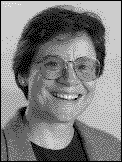From the Editor
 Journal of Swine Health and Production: Continuous improvement
Journal of Swine Health and Production: Continuous improvement
In an effort to improve the journal, we have implemented some new policies that I would like to share with you. Hopefully these changes will enhance both the aesthetic and scientific quality of the journal.
Reviewer feedback
At the editorial board meeting, it was suggested that everyone who reviews a manuscript would learn from seeing what other reviewers wrote about that manuscript. In the future, when the manuscript review process is complete, all reviewers will be sent the complete review package that is sent to the author. We also discussed giving graduate students the opportunity to review manuscripts under the direction of their major supervisor. This is a good way to teach the future JSHAP reviewers.
Pre-review copyright
When we receive a new manuscript for consideration in the JSHAP office, all authors listed on the manuscript will be asked to sign a pre-review copyright agreement. This form will establish that all authors have read and agree with what is printed in the manuscript and that they accept the fact that if the manuscript is accepted for publication by the JSHAP, the copyright will be transferred to the AASV. It will be the responsibility of the corresponding author to contact the other authors to receive their signatures. Once the manuscript is accepted for publication, the corresponding author will sign the final copyright transfer agreement.
Advertisements
In response to the feedback from the National Library of Medicine, advertisements in the journal will be placed either before or after the scientific articles and will not separate scientific articles as they have in previous issues. This may at times necessitate starting manuscripts on the left rather than the right hand side of the page.
Author guidelines
We commonly receive manuscripts formatted in the author's own unique style rather than in the required JSHAP format. This creates two major problems. First of all, the manuscript is difficult to review. This leads to negative reviewer comments even if the science is sound. Secondly, reformatting manuscripts is extremely time consuming. Dr Judi Bell spends too much time doing this tedious work, when we have hired her for her editing and scientific expertise. A manuscript submitted to JSHAP that does not comply with the guidelines will be returned to the author for reformatting prior to being sent out for review. The same process will be used for Diagnostic notes, What's your interpretation, and Practice tip submissions. The Author guidelines are available in full on the web site (www.aasv.org) and are summarized in the January issues of JSHAP.
We are receiving an increasing proportion of manuscript submissions from countries other than Canada and the United States. This is very positive, because we are clearly identified as a journal with an international reputation. The downside of this is that unusual terminology and sentence structure may be used in these manuscripts, making them difficult to read and interpret. The reviewers are unable to understand the science, and again, it becomes Dr Bell's responsibility to rewrite the article prior to publication. We will encourage these authors to find an English-speaking colleague to edit the manuscript prior to review. If the author does not have access to such a person, we will assist them in finding someone who will edit the manuscript on a fee-for-service basis.
Reader and author feedback
I really appreciated hearing from one reader in response to my call for suggestions in the last issue of the journal. I realize that you are all very busy; however, if you have comments, please send them along. More formal data collection will occur in September when we will survey a random sample of 250 subscribers. This Reader Survey will be sent electronically so that participants can complete the questions either by e-mail or fax. In addition, all authors of scientific papers published in the last 2 years will be sent an Author Survey. Our goal is to have the answers summarized for the annual meeting.
--Cate Dewey
